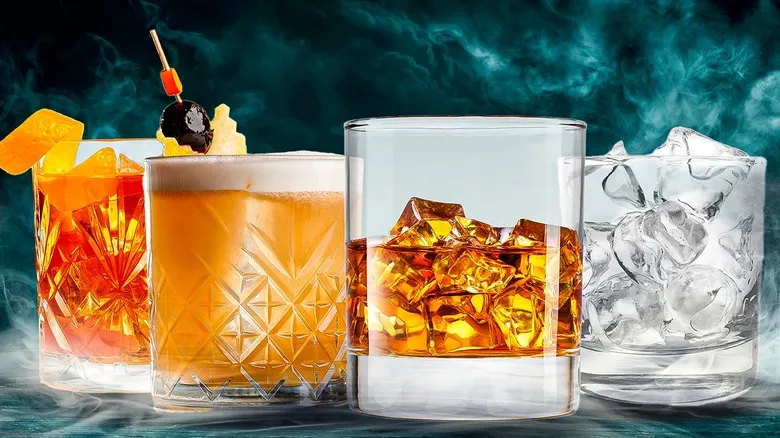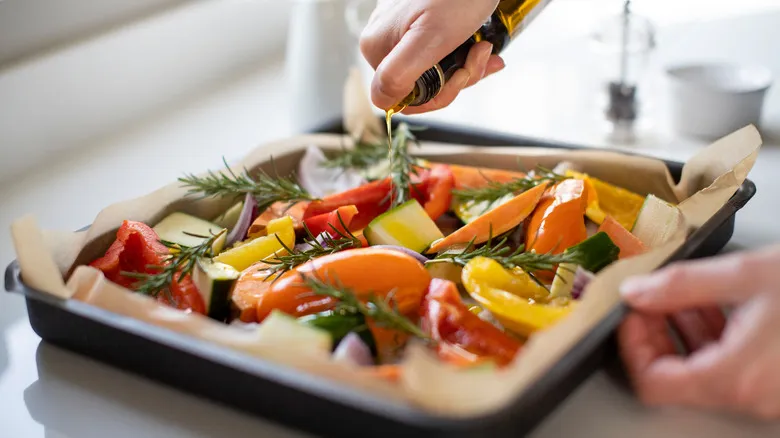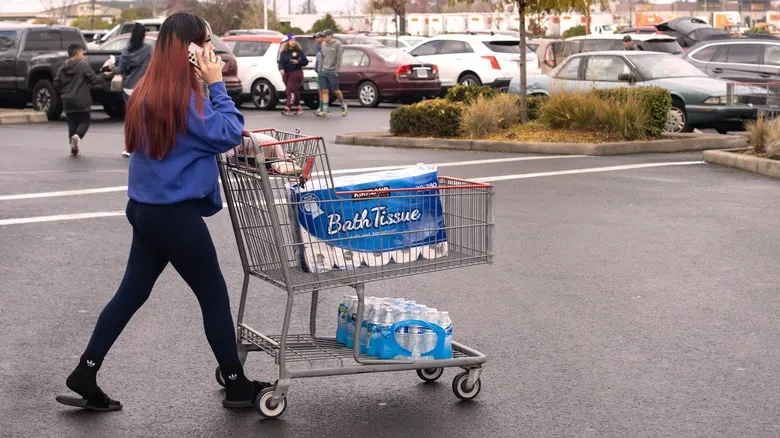Adding ice to the mix too soon
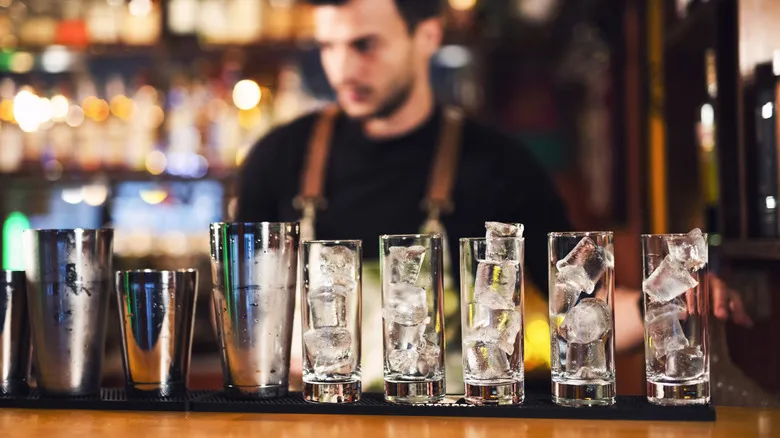
Many novice bartenders believe that the first step in crafting a cocktail is to fill the glass with ice. However, this isn't always the right approach. Our whiskey specialists from The Cask Connoisseur, Chris Walster and Luke Slater, explained, "If the drink is going to be served and consumed right away, then adding ice first is perfectly fine." It's not a major error. However, if the drink will sit for a minute or two or if there's any delay in enjoying it, the situation changes. In such cases, Slater advises, "Ice should be added as late as possible to prevent excessive dilution." After all, no one wants a watered-down drink—unless, of course, it's whiskey and water.
"Cocktails made with whiskey usually require stirring the ingredients, which can be more challenging if ice is added too early," Slater noted. To achieve the ideal blend with minimal dilution, it's often best to add ice only after the ingredients have been combined and stirred. This way, incorporating the ice becomes straightforward and won't interfere with the cocktail-making process.
Not knowing when to stir and when to shake a whiskey cocktail
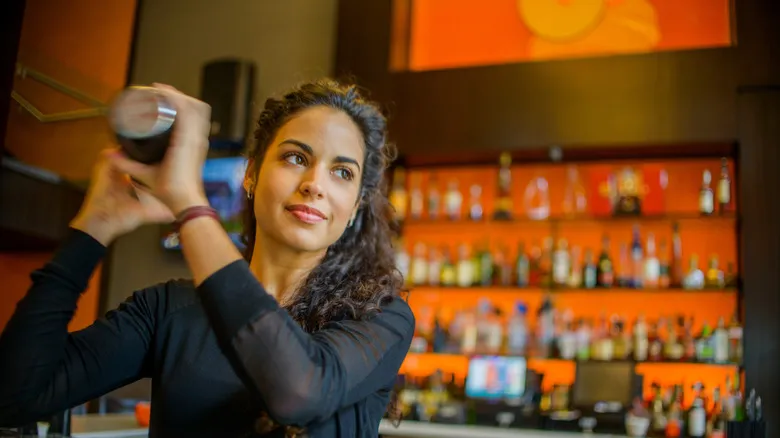
You might believe that stirring or shaking a cocktail doesn't significantly impact the result, but these subtle differences can greatly influence the final taste of your whiskey cocktails. Shaking ingredients with ice introduces water into the mix, and the more you shake, the more diluted your drink becomes. While shaking is ideal for certain cocktails, such as martinis, which are served straight up, it may not be the best method for others.
Experts Chris Walster and Luke Slater from The Cask Connoisseur advise that the choice between shaking and stirring depends on the specific ingredients of the cocktail. They recommend stirring spirit-forward drinks like an Old Fashioned or a Manhattan, while cocktails that include juice or egg whites, such as a Whiskey Sour or Bourbon Smash, should be shaken. Additionally, I've noticed that most cocktails containing citrus juice also benefit from shaking. As you craft your whiskey cocktail, whatever it may be, take the ingredients into account and adhere to these guidelines. This will help you avoid compromising the quality of your drink by mistakenly shaking a cocktail that should be stirred, or the other way around.
Overpowering whiskey with too many ingredients or an excess of heavy mixers

Whiskey boasts a rich tapestry of flavors, and it's important to let its complexity shine, even in cocktails. Therefore, using heavy mixers or an abundance of ingredients is generally discouraged. Whisky expert Chris Walster advises against heavy mixers that might overshadow the spirit's inherent qualities. However, the way you create a cocktail largely depends on your individual taste.
Whether you lean towards a whiskey-centric drink with few additions or prefer a cocktail with mixers, achieving balance is essential. As Walster pointed out, excessive mixers can diminish the whiskey's flavor, while too little may alienate those who aren't fond of sipping whiskey straight. Ultimately, it's about aligning your proportions with your taste preferences. If you're uncertain about your ideal mix, Walster suggests adding mixers gradually and sampling as you go. It's easy to increase the amount until you find the right balance, but removing ingredients is much more challenging.
Using the wrong type of glass for your whiskey cocktail
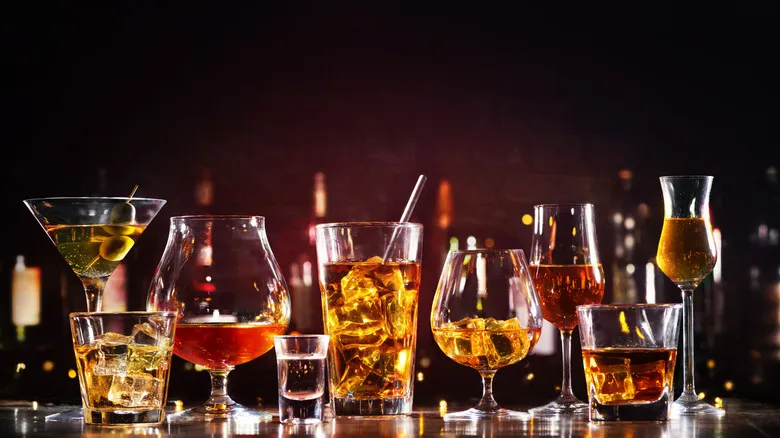
The choice of glassware is crucial for any beverage, including whiskey cocktails. Our specialists at The Cask Connoisseur, Luke Slater and Chris Walster, wholeheartedly agree. They emphasize that the glass can influence the flavor of the spirit, particularly when enjoyed neat (straight from the bottle). While the ingredients in whiskey cocktails primarily dictate the flavor profile, selecting the appropriate glass remains essential. The right glass not only enhances the visual appeal but also amplifies the aroma and enriches the overall drinking experience. Engaging all your senses is key, starting with sight and smell, followed by achieving the perfect balance of flavors.
There is a wide variety of cocktail glasses, each designed for specific purposes. When preparing whiskey cocktails, two primary styles to have on hand are highball and rocks glasses. Highball glasses are ideal for cocktails that include mixers like juice or soda, while rocks glasses are suited for spirit-forward drinks such as an Old Fashioned or Sazerac. If you enjoy whiskey mules, copper mugs can be a fun addition, although a highball glass will work just as effectively.
Underestimating how much the shape of your ice affects a whiskey cocktail
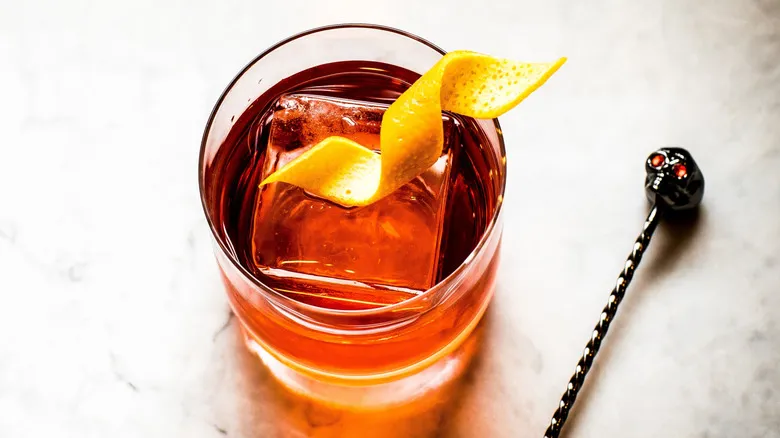
If you've ever visited a bar and noticed drinks served with a single large ice cube, you might assume it's just for show. While they do enhance the drink's visual appeal, they also have a practical function. Large ice cubes melt more slowly than smaller ones, which means they won't water down a well-crafted cocktail as quickly. This concept applies not only to a perfectly shaped ice sphere or a sizable square block but also highlights the importance of the type of ice used in whiskey cocktails.
Chris Walster and Luke Slater from The Cask Connoisseur suggest opting for larger ice cubes or chilled whiskey stones when making whiskey cocktails. They advise against using crushed ice, as it can easily lead to over-dilution. If you're looking to elevate your whiskey cocktails, consider investing in a specialized ice tray that produces large whiskey cubes. Whiskey stones are also a fun option, especially if you want to avoid dilution altogether, but Slater and Walster caution that they may not chill your drinks as effectively as traditional ice.
Thinking the type of whiskey you use doesn't matter -- or using a pricey bottle
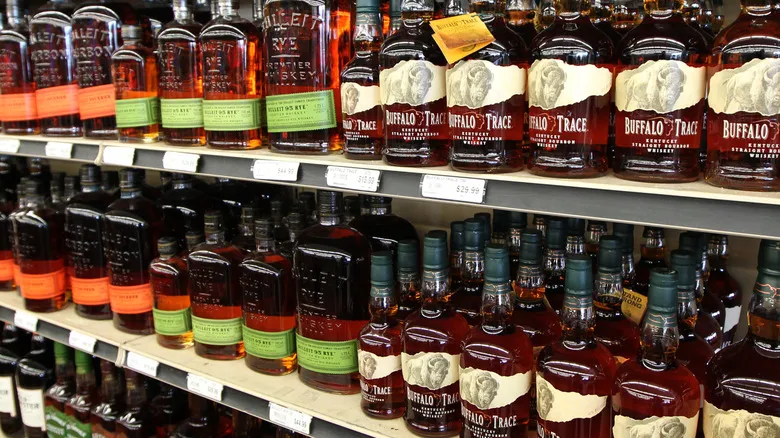
When making cocktails, you might assume that the type of whiskey you choose doesn't matter since you'll be mixing in other flavors, but that's a misconception. It's essential to start with a strong foundation, meaning selecting the right kind or quality of whiskey. For instance, rye whiskey is known for its spiciness, which can significantly impact the overall taste of your drink.
At The Cask Connoisseur, they believe there's nothing wrong with opting for house spirits. However, they caution that going for the cheapest option isn't always wise: "To enhance your experience, it's often best to choose a mid-range bottle. But if you're just experimenting, stick to your budget!" Chris Walster also emphasized that you don't have to use your priciest spirit, as it's not meant to be savored on its own. Instead, pick a reasonably priced bottle, and your cocktails will stand out without breaking the bank.
Not paying attention to the measurements in a whiskey cocktail recipe
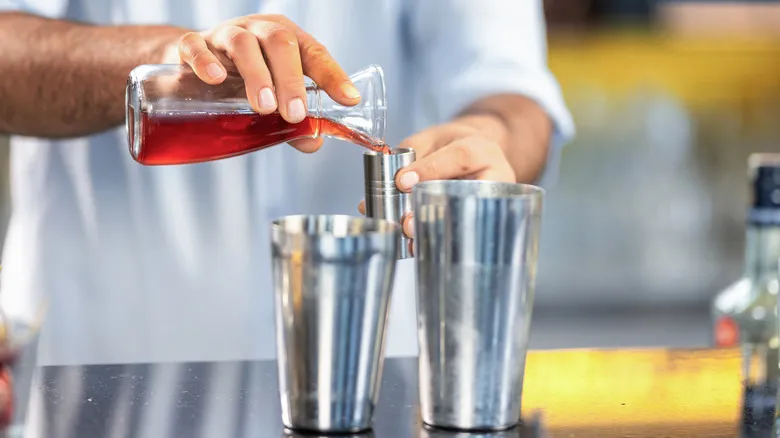
To the casual observer, it may seem like fast bartenders are merely tossing ingredients into cocktail glasses without much care, but that's not the case. Their skill is rooted in experience and, as you might expect, precision. When creating a new cocktail, it's perfectly fine to estimate ingredients and experiment, but when following a specific recipe, accurate measurements are crucial. A well-crafted cocktail achieves a harmonious balance of flavors, and straying from the prescribed amounts can lead to disappointing results. In fact, some drinks might end up tasting quite unpleasant.
Whisky and Beer Expert Luke Slater always relies on a jigger to ensure his measurements are spot on while working. At home, he tends to be more relaxed with approximations—if the cocktail tastes good, he’s satisfied. However, he has extensive experience in refining his cocktail recipes. If you're a novice home bartender, it’s advisable to stick with a jigger until you become more familiar with how the ingredients of a cocktail interact.
Making whiskey cocktails with too much sugar
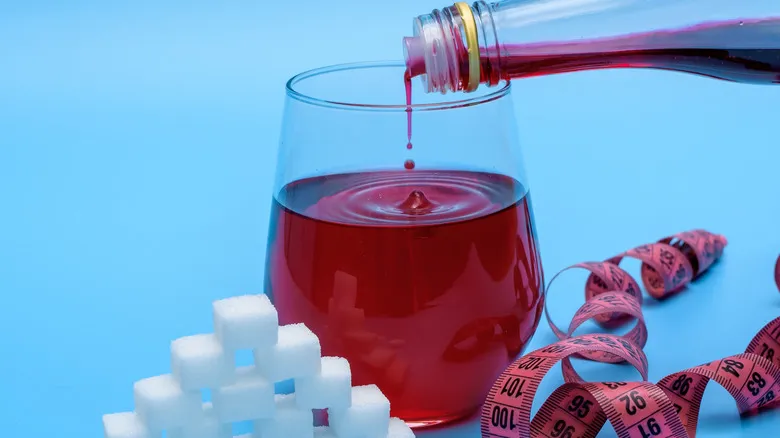
Incorporating sugar into a whiskey cocktail can create a harmonious flavor profile, but overdoing it can lead to regret. As our experts from The Cask Connoisseur, Chris Walster and Luke Slater, explained, "Too much sweetness can overshadow the rich caramel and spice notes of bourbon, resulting in a cloying drink instead of a balanced one." While sugar enhances the natural spices found in bourbon and whiskey, it's easy to overindulge—so avoid this common pitfall.
According to Slater and Walster, "Finding the right level of sweetness, whether from syrups, juices, or liqueurs, is crucial to complementing the bourbon without overwhelming it." They advise using fresh, high-quality ingredients to achieve the ideal flavor balance—steering clear of cheap liqueurs or canned juices. They also emphasized that moderation is key when adding mixers; you want to ensure that they don't mask the whiskey's intrinsic flavors. A well-crafted cocktail should allow the whiskey to take center stage. This is where following recipes becomes invaluable, as they remove the guesswork and help prevent the addition of excessive sugar or other overpowering components.
Forgetting to pair whiskey with bitters and citrus
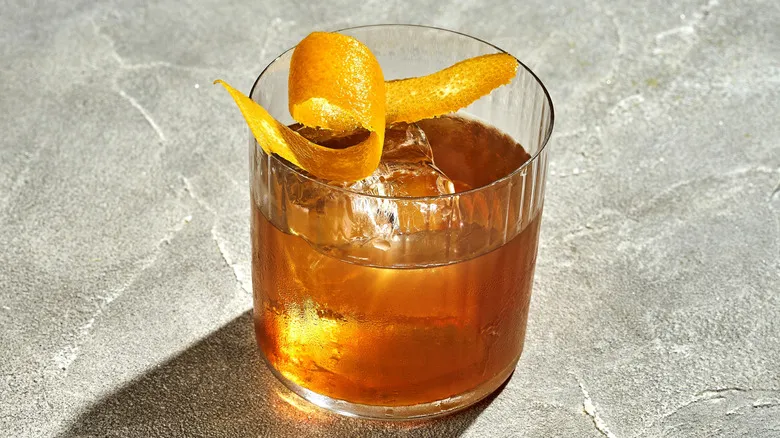
Whiskey has long enjoyed a close relationship with citrus and bitters, which is why you'll often see whiskey featured alongside one or both in a variety of classic cocktails. From an Old Fashioned to a Whiskey Sour and a Whiskey Mule, each drink incorporates at least one of whiskey's favored companions—an Old Fashioned even includes both.
So, what is it about bitters and citrus that makes them such a perfect match for whiskey? Luke Slater and Chris Walster from The Cask Connoisseur offer some insights. They explain that bitters contribute depth to whiskey cocktails, creating the complex and utterly delightful flavor found in an Old Fashioned. In contrast, citrus brings a sense of brightness and freshness. However, it's not simply a matter of throwing in any bitters or citrus when crafting whiskey cocktails. The experts advise, "You need to ensure that the bourbon's flavor profile aligns with the suggested ingredients. For instance, if you're using a high rye bourbon, you might want to avoid adding extra spice, but if it has citrus notes, additional citrus could enhance the drink." Ultimately, it all hinges on the specific bottle you choose.
Choosing not to muddle whiskey cocktails containing fruits or herbs
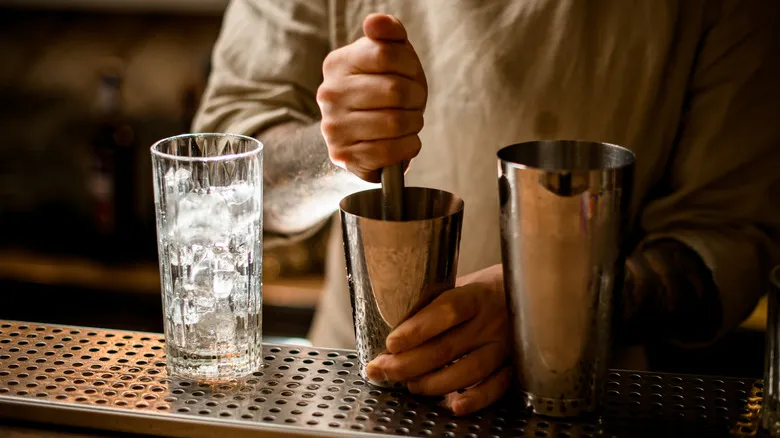
As a general guideline, any fruits, herbs, or other plant materials added to a cocktail should be muddled. This process is essential for unlocking the aromatic flavors of these ingredients. Skipping this important step is a frequent error—make sure it’s not one you commit.
According to our experts at The Cask Connoisseur, there are not many whiskey cocktails that necessitate muddling. Typically, stirring or shaking is sufficient to blend the flavors effectively. However, a few classic whiskey cocktails do require muddling, such as the Old Fashioned (especially the modern version that includes a muddled cherry and orange slice). The Whiskey Smash, which features lemon and mint, also fits this category. If you don’t have a muddler on hand, look for an alternative. Often, the broad end of a large spoon or spatula can work in a pinch. While it may not be as effective as a proper muddling tool, using a substitute is far better than skipping the step altogether.
Assuming garnishes don't add anything to the drinking experience
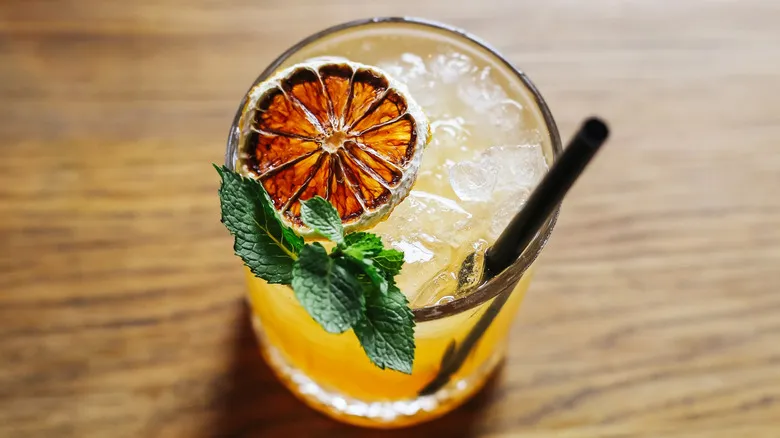
After you’ve created a tasty whiskey cocktail, the last touch is to add a garnish. You might think it’s not essential, and in many ways, it isn’t. However, it does provide a finishing touch that draws attention. Luke Slater and Chris Walster from The Cask Connoisseur agree that garnishes aren’t absolutely necessary. Nevertheless, they mentioned that they can enhance the overall drinking experience.
Our experts suggest that garnishes not only improve the drink's visual appeal but also help to highlight its flavors. Can you enjoy your cocktail without a garnish? Absolutely, but they contribute to both the aroma and presentation, making them an excellent way to elevate the entire sensory experience. If you’re serving drinks to friends, garnishes definitely add a professional flair. Ultimately, it boils down to your personal taste, but if you aim to achieve expert-level whiskey cocktail crafting, adding garnishes will certainly guide you in the right direction.
Leaving out ingredients in a whiskey cocktail recipe
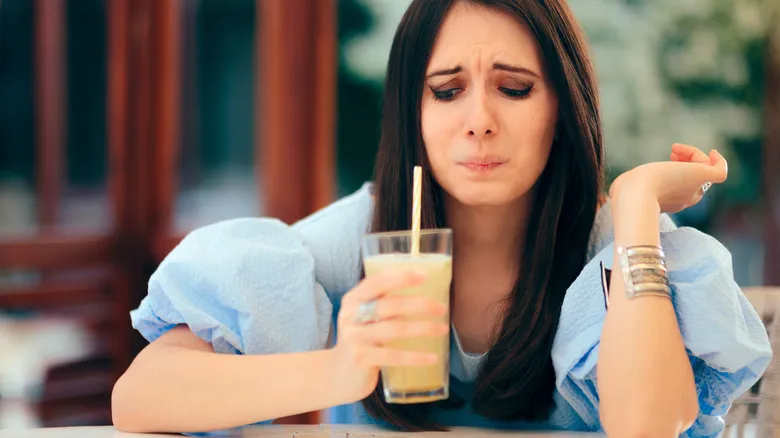
Omitting ingredients from a specific whiskey cocktail recipe or making substitutions at will is a frequent error that many novice bartenders make. While it might seem innocuous to skip an ingredient you don’t have, doing so can significantly diminish the drink's flavor. A well-crafted whiskey cocktail depends on a harmonious blend of flavors, and leaving out even a seemingly minor component—such as bitters, citrus, or sugar—can drastically alter the final result, often for the worse.
Whisky and Beer expert Luke Slater advises, "It's always best to adhere to the recipe; otherwise, it ceases to be a whiskey cocktail." He acknowledges that you may encounter recipes with slight variations, but simply tossing in a random assortment of ingredients won’t yield a cocktail worth savoring. While you might occasionally stumble upon a successful mix, established recipes have been refined for a reason, and you can rely on them to create something exceptional every time.
Not pairing whiskey cocktails with complimentary foods
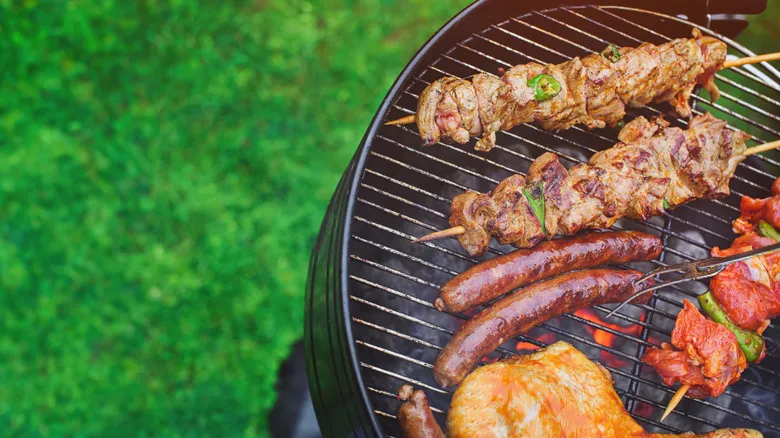
Another excellent way to elevate your whiskey cocktails doesn't involve the actual preparation of the drink. Instead, it focuses on pairing your delightful concoctions with foods that complement them. Luckily, there is a diverse array of dishes that enhance whiskey by highlighting its rich, sweet, and often smoky characteristics.
As noted by Chris Walster and Luke Slater from The Cask Connoisseur, "Aged cheeses like sharp cheddar and Gouda, along with charcuterie such as prosciutto or bacon, harmonize with whiskey's complexity." If you want to amplify the spirit's smoky notes, they suggest grilled meats, especially steak and ribs. Roasted nuts like almonds and pecans can also help to reveal whiskey's toasty undertones. To emphasize its warmth, consider pairing it with spicy foods like BBQ and chicken wings. Finally, they mentioned that dark chocolate and whiskey make for a classic combination that pairs beautifully with a bourbon Old Fashioned.
All of this sounds delectable, and it truly is! Don’t fall into the trap of thinking whiskey is meant to be savored alone. Pair it with a complementary dish, and you'll be astonished at how the flavors meld and expand on your palate.
Not branching out from a basic whiskey highball
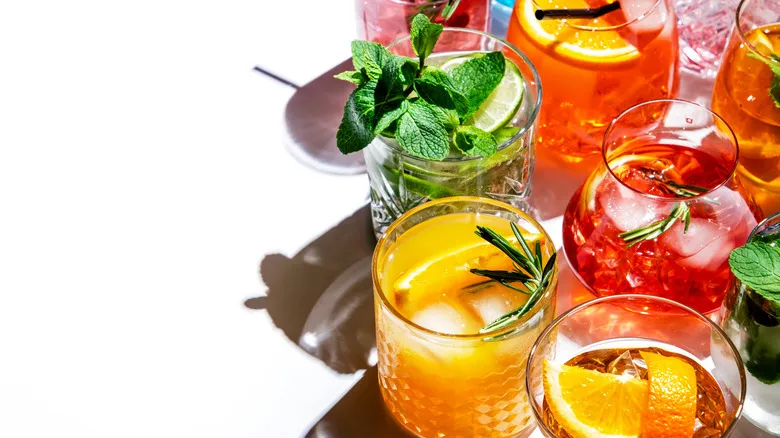
A fundamental whiskey highball consists of a shot of whiskey combined with a mixer, such as ginger ale, Coke, or even water. While these straightforward, traditional cocktails have their charm, sticking exclusively to them can be a missed opportunity. The realm of mixology offers a wealth of options beyond a simple two-ingredient drink, and you won't want to overlook that. Are highballs quick and easy to prepare? Absolutely. Are they nearly foolproof? Yes, but if that's all you ever indulge in, you're definitely shortchanging yourself.
Chris Walster and Luke Slater from The Cask Connoisseur are enthusiastic advocates for expertly crafted whiskey cocktails. Some of their top picks include the Whiskey Sour, Old Fashioned, Manhattan, Bourbon Smash, and Mint Julep. Even if these drinks seem novel and thrilling to you, they have a rich history and are among the most beloved cocktails of all time. Other classic whiskey cocktails that I particularly enjoy are the Sazerac and the Boulevardier. Give any of the suggested drinks a try, and you’ll be pleased you did.
Recommended
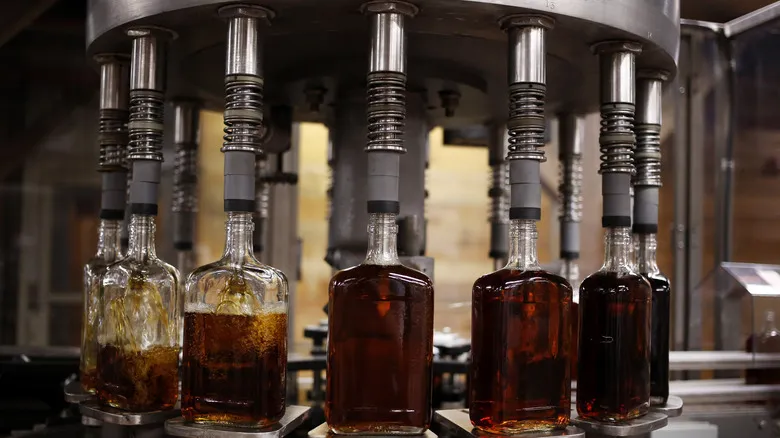
How Many Bottles Of Bourbon Are Typically In A Barrel?
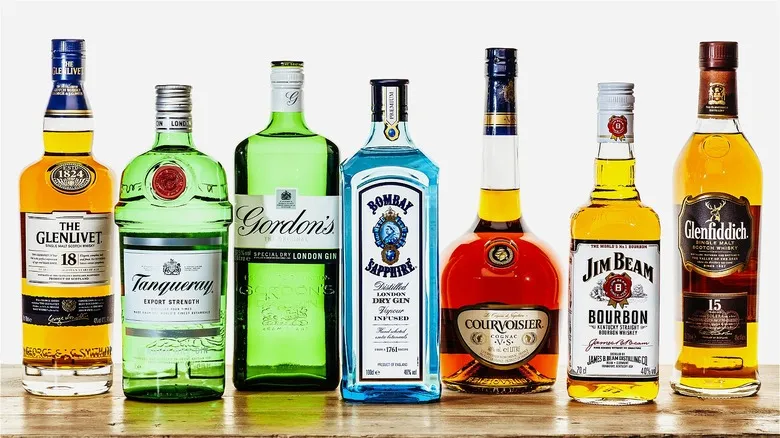
What Does Proof Mean When It Comes To Alcohol?
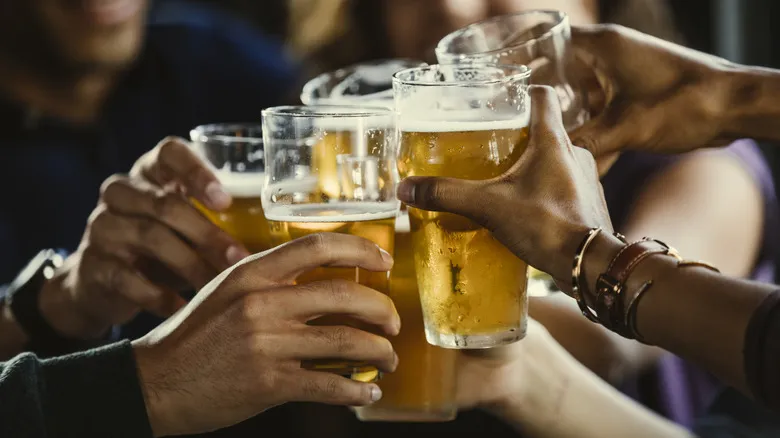
The State That Drinks The Most Alcohol Is Also One Of The Smallest
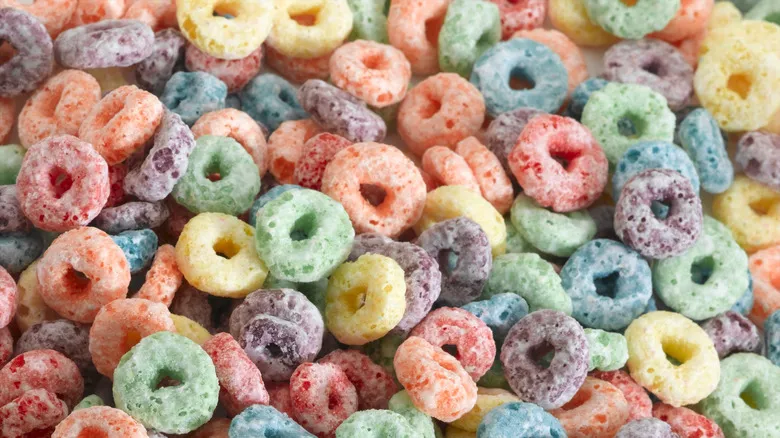
Cereal-Infused Vodka Is A Game Changer For Sweet, Delicious Drinks
Next up

